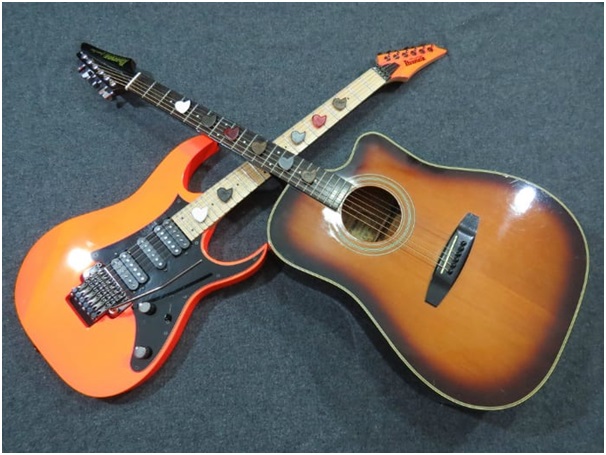When venturing into the world of music, learning to play the guitar is often a top choice for many aspiring musicians. However, with several types of guitars available, it can be overwhelming to choose the one that’s easiest to play, especially for beginners. In this article, we’ll explore the differences between acoustic, electric, and classical guitars, and analyze various factors that affect their playability. By the end, you’ll have a better understanding of which guitar might be the best fit for your playing style and skill level.
Discover the step-by-step guide on how to master the challenging F chord on the guitar – how to do f chord on guitar.
Understanding Different Types of Guitars
Guitars come in various shapes, sizes, and designs, each serving a unique purpose in the world of music. The three main types are acoustic, electric, and classical guitars. Each has its distinct characteristics and requires different playing techniques.
Acoustic Guitars
Acoustic guitars are known for their warm and natural sound, produced without the need for amplification. They are commonly used in folk, country, and singer-songwriter genres. One of the advantages of acoustic guitars is their simplicity – no need for external equipment, just pick it up and start playing. However, the thicker strings and higher action might make them slightly more challenging for absolute beginners.
Electric Guitars
Electric guitars are a staple in rock, blues, and jazz music, known for their versatility and ability to produce a wide range of sounds with the help of amplifiers and effects. They have thinner strings and lower action, making them easier to press down on the fretboard. Additionally, the smaller body size and lighter strings reduce hand fatigue, making them a popular choice for beginners.
Classical Guitars
Classical guitars have nylon strings and a wider neck, designed primarily for classical and flamenco music. The lower tension of nylon strings makes them gentler on the fingers, and the wider fretboard allows for more precise finger placement. However, the classical guitar’s unique playing style, involving fingerpicking techniques, might require more dedication and practice.
Factors That Affect Playability
Several factors influence how easy or challenging a guitar is to play. Understanding these factors can help you make an informed decision when choosing your first guitar.
Neck Shape and Width
The shape and width of the guitar’s neck significantly impact playability. A thinner neck allows for easier grip, making it ideal for players with smaller hands. On the other hand, players with larger hands might prefer a slightly wider neck, as it provides more space between the strings and reduces the chances of accidentally muting adjacent strings.
Action and String Gauge
The action refers to the height of the strings from the fretboard. Lower action reduces the effort required to press the strings, resulting in smoother and faster playing. String gauge also plays a role – lighter gauge strings are easier to press down, while heavier gauge strings produce a fuller sound but require more finger strength.
Body Shape and Size
The guitar’s body shape and size affect both playability and comfort. Smaller-bodied guitars are more manageable and suitable for players of all ages, especially beginners. Larger-bodied guitars might be more challenging to handle, but they often produce a more resonant sound.
Fretboard Material
Guitars can have different fretboard materials, such as rosewood, maple, or ebony. The choice of material can influence the guitar’s feel and playability. Some players prefer the smoothness of ebony, while others find maple more comfortable for sliding between notes.
Which Guitar Is Easier to Play?
The answer to this question depends on individual preferences and playing styles. Acoustic guitars can be more physically demanding for beginners due to their thicker strings and higher action. Electric guitars, with their lower action and thinner strings, are generally considered easier to play, especially for beginners who may not have developed finger strength yet.
Classical guitars, though gentle on the fingers, require a specific fingerpicking technique that might take time to master. If you’re interested in classical or fingerstyle music, a classical guitar could be the right choice.
Ultimately, the guitar that’s easiest to play for you is the one that feels comfortable in your hands and aligns with the genre of music you want to pursue.
Pros and Cons of Acoustic Guitars
Acoustic guitars have their unique advantages, such as their natural sound and simplicity. However, they might not be the easiest option for beginners due to the higher finger strength required to press the strings.
Pros and Cons of Electric Guitars
Electric guitars offer versatility and ease of play, especially for beginners. However, they require additional equipment (amplifiers and cables) and might be more expensive than acoustic guitars.
Pros and Cons of Classical Guitars
Classical guitars provide a gentle learning curve for beginners due to their nylon strings and wider neck. However, they are more specialized and might not suit players interested in other music genres.
Conclusion
In conclusion, the question of which guitar is easier to play doesn’t have a one-size-fits-all answer. Acoustic guitars might be more physically demanding for beginners, while electric guitars are generally easier to handle due to their lower action and thinner strings. Classical guitars offer a unique playing experience, requiring specific fingerpicking techniques.
The key to finding the right guitar for you lies in trying out different types and models to see which one feels most comfortable and suits your musical aspirations. Remember, regardless of the type of guitar you choose, consistent practice, dedication, and a passion for music will lead you to become a proficient player in no time.
